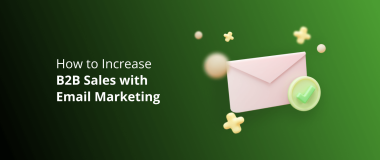Quickly now! This article will get deleted in 10 minutes, so we have no time to waste!
Just kidding.
Had you there for a moment, though, didn’t I?
Now imagine I was offering a pair of shoes – the last ones too, at a price of $44.99, instead of the regular $63.99!
That would be an example of scarcity, and it works like a charm when convincing people to buy something.
Read on as we unravel all the hidden and not so hidden tactics of scarcity in marketing.
Readers Also Enjoy: Marketing Psychology [How to Guide Consumer Behavior] – DevriX
What Is Scarcity in Marketing?
The psychological principle that empowers scarcity is the fear of missing out, or FOMO. In other words, users have a strong desire to have what others have.
Brands are well aware of that principle, so they regularly limit product supply, or insert a time frame, in order to increase sales and revenue.
So, do these simple scarcity marketing tactics work? You bet they do.
Why do you think Black Friday is such a big deal to both businesses and customers? Anyway, let us take a closer look at what scarcity is all about and how to properly apply it.
Readers Also Enjoy: Persuasion Psychology or How to Influence Your Customers – DevriX
The Main Elements of Scarcity Marketing

It’s important to note that scarcity is almost always artificial. Knowing the essence of scarcity principles will help you properly apply tactics.
- Rareness
- Time Limit
- Exclusiveness
1. Rareness
When an item is rare, it attracts tons of potential buyers. A lot of fashion and luxury good businesses often use this strategy by creating artificial purchasing barriers. Limited availability makes products very sought after, and when they do become available – users typically hurry to buy them.
2. Time Limit
The most classic principle of scarcity is to limit the time frame when the products/services are available. A good example of this are concert tickets, holiday reservations, airline tickets, and so on.
The words “only a few available”, or “another user is viewing this room” motivates people to not waste time, and proceed with the checkout immediately.
3. Exclusiveness
Limited edition products are always a good way to create urgency. Many brands use this strategy, where the products keep the same price, but due to the low quantity, customers are prompted to act fast.
Usually in this scenario, when goods go out of stock, they are gone for good, or at least it takes a while for them to be back in stock and ready for purchase.
How to Create Scarcity: 7 Tactics to Boost Sales

- Only a Few Left in Stock.
- Use This Limited-Time Offer – Ends Tomorrow!
- Order Before… And Get Your Delivery Today.
- Discount – On the Go.
- Enter For a Chance to Win a Free…
- Low Prices – Come Now!
- Something Unique for Each Season
1. Only a Few Left in Stock
A commonly used scarcity approach is to display the amount of items left in stock. This way you create a sense of urgency, and motivate users to buy the product before it’s too late.
You’ve probably seen this strategy used a lot on Amazon, but they’re far from the only company taking advantage of it. The common practice is to display the exact amount of items left, however, you can alternatively just state “Almost gone”, “Last chance”, etc.
2. Use This Limited-Time Offer – Ends Tomorrow!
Limited-time offers (LTO) are a great way to immediately increase sales. After all, you urge your customers to complete a purchase right away, usually within the same day.
However, don’t offer such promotions too often, as that can decrease the perceived quality of your goods.
Additionally, this is a good tactic for when you’re launching a new product, as it allows you to create a buzz which will impact your initial sales. It also can further motivate your potential customers to pay for your product/service, while it’s at a lower cost.
Readers Also Enjoy: The Best Performing eCommerce Discount Strategies to Try – DevriX
3. Order Before… And Get Your Delivery Today
Another common example of marketing scarcity tactics is to provide special offers for customers that order before a certain deadline, typically within the same day or before a set time like midnight or 12 AM, for example.
Users today are very impatient, as the average attention span clearly indicates. Thus, offering a very quick delivery really does encourage them to buy.
What’s more, users tend to purchase more items at once under such conditions, since they feel they’re actually saving time and money. Of course, you can further encourage that buying impulse by providing free delivery after a minimum order amount is reached.
Sounds great, doesn’t it – you can receive free delivery today. Add a timer on your page to indicate how much time is left for users to take advantage of the special offer, and you’re all ready and set for higher sales volumes.
Readers Also Enjoy: 11 Tips to Increase eCommerce Traffic [And Boost Revenue] – DevriX
4. Discount – On the Go
Did you know that during 2022’s holiday season, more than 50% of all eCommerce purchases were made through mobile devices? Furthermore, the tendency is for smartphone shopping to only rise in popularity.
So, how to create scarcity, in this case? Easy. Use people’s fear of missing out, and provide special discounts for specific platforms. For instance, consumers that purchase through your mobile app, within the next week, will get 20% off.
Even if a person wasn’t really settled on buying something from you, why not use the occasion and get it with a discount?
5. Enter for a Chance to Win a Free…
People love it when they’re offered the chance to win something free, especially if it’s something they are really interested in.
Here’s a great tactic to apply:
Offer a limited amount of free products. For example, you can create a form where users can enter their email addresses and other information, in order to enter the giveaway/contest and have a chance to win something for free.
Of course, not everyone that enters will win, as you can only offer a limited amount of free items. The beauty of it all comes from the fact that you will obtain a great number of potential customers, ones that you know are already interested in a specific product/service.
6. Low Prices – Come Now!
One of the fundamental scarcity marketing tactics is to limit supply. Once you add a low price to the mixture – the results can be awesome for your business.
A famous example of this tactic is LIDL’s limited edition sneakers. The German store ran a contest for their $16 sneakers. The conditions were that people had to stand at a particular place in their store, and take a picture with the LIDL app.
They had to then upload the picture to Instagram with a particular hashtag, in order to enter the competition and have the chance to win one of 400 pairs.
The outcome? They went viral, and a pair of those shoes can now be found online for over $6,500. LIDL generated a social media buzz around them, increased sales, and won lots of new customers.
As a result of their successful campaign, they soon started selling other affordable, branded clothing.
7. Something Unique for Each Season
Offering special seasonal promotions is a tactic almost every business does. After all, holidays do encourage users to spend more, even too much sometimes.
What’s more, it’s important to provide season-specific items that people can’t usually purchase. Naturally, this will also kindle the users’ impulse to buy an item that may not be available later in the year. Quite often, shoppers also recommend such items to friends and family.
Readers Also Enjoy: Summer Marketing Ideas for Hot Sales – DevriX
Summary
Scarcity in marketing can be an excellent strategy to boost sales, and win over new customers. However, do not overuse scarcity, as it will not only stop having the same effect, it might also reflect negatively on your business and its reputation.
Still, when used properly, scarcity can really give you the boost you need.




